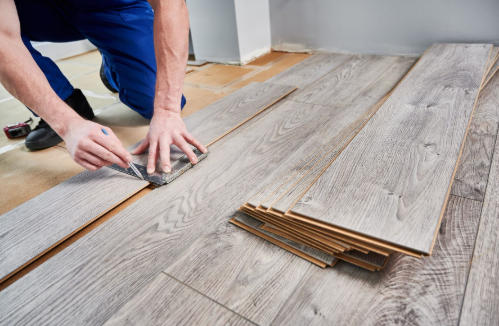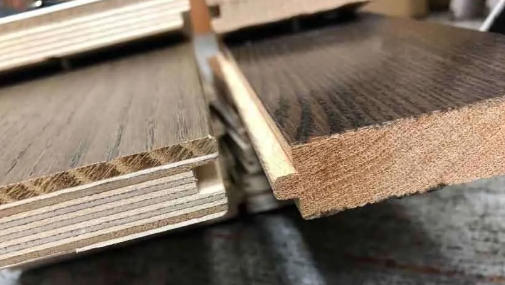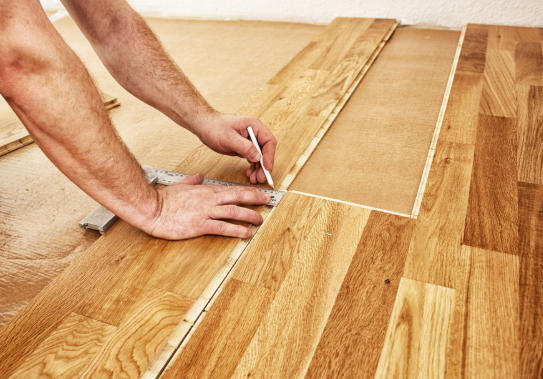Views: 222 Author: Rebecca Publish Time: 2025-10-26 Origin: Site











Content Menu
● Understanding What Engineered Hardwood Flooring Really Is
● The Science Behind Engineered Design
● Differences Between Engineered and Solid Hardwood
● How Engineered Hardwood Flooring Is Manufactured
>> 4. Hot Pressing and Conditioning
>> 6. Finishing
● Top Advantages of Engineered Hardwood
>> 1. Stability and Durability
>> 2. Authentic Natural Appearance
>> 6. Compatibility With Underfloor Heating
● Potential Drawbacks to Watch Out For
● Installation Techniques for Engineered Hardwood
● Acoustic and Thermal Advantages
● Maintenance and Longevity Tips
>> 1. Cleaning
>> 2. Re-Coating and Refinishing
>> 4. Seasonal Humidity Control
● Design and Aesthetic Options
● Cost Analysis and Long-Term Value
● Environmental Sustainability
● Deciding Whether It's the Right Choice
● Frequently Asked Questions (FAQ)
>> 1. Can engineered hardwood be refinished like solid hardwood?
>> 2. Is engineered hardwood flooring suitable for kitchens and basements?
>> 3. What is the average lifespan of engineered hardwood flooring?
>> 4. Can you install engineered hardwood over radiant heating systems?
>> 5. How can I tell if engineered wood is high quality?
Engineered hardwood flooring has become a dominant choice in modern interior design and construction, offering a perfect blend of beauty, strength, and adaptability. As homeowners increasingly seek eco-conscious and cost-effective materials, engineered hardwood stands out as a versatile solution that retains the elegance of natural wood.
But a common question persists among buyers and designers alike: Is engineered hardwood flooring real wood?
Let's explore this in detail — covering manufacturing processes, performance comparison, installation tips, maintenance strategies, and long-term value, so you can make informed decisions for residential or commercial projects.

Engineered hardwood flooring consists of several layers of wood bonded together under high pressure to increase stability. The surface layer — the part visible when installed — is genuine hardwood, while the inner layers are made of high-quality plywood or high-density fiberboard (HDF).
1. Top Veneer (Wear Layer):
Crafted from real hardwood species such as oak, maple, walnut, or hickory. This layer ranges from 0.6 mm to 6 mm in thickness and determines the final appearance, color, and grain pattern of the flooring.
2. Core Layers:
Multiple cross-laminated plywood or composite wood sheets form the core. Each layer is laid perpendicular to the one below it to resist expansion and contraction caused by humidity changes.
3. Backing Layer (Bottom):
A stabilizing wood layer that helps distribute pressure evenly and prevents cupping or distortion.
This three-part assembly makes engineered wood visually identical to solid hardwood, but technically stronger and more adaptable.
Unlike pure solid wood, which naturally expands and contracts with climate fluctuations, engineered hardwood uses a cross-ply structure that minimizes dimensional movement. This engineering approach enhances resistance to moisture and temperature variations — making it suitable for almost any room in a home.
The technology originated in mid-20th century Scandinavia when engineers sought to reduce the problems of solid wood in colder, humid environments. Today, it has evolved into a globally trusted flooring system backed by advanced materials science.
| Feature | Engineered Hardwood | Solid Hardwood |
|---|---|---|
| Composition | Multi-layered structure with a real wood surface | Entire plank is a single piece of wood |
| Dimensional Stability | Excellent; resists warping and swelling | Can expand, shrink, or warp with humidity |
| Moisture Resistance | Moderate to high | Low |
| Installation Locations | Above, on, or below grade | Above grade only |
| Installation Types | Floating, glue-down, or nail-down | Nail-down only |
| Cost | Moderate | Higher |
| Lifespan | 25–40 years | 40–80 years |
| Refinishing | 1–3 times (based on veneer) | 4–6 times |
The comparison shows that engineered hardwood is not only real wood, but it provides structural stability that pure hardwood often lacks.
Premium hardwood species are chosen for the veneer layer. Manufacturers focus on wood with consistent grain and color to create a visually harmonious product.
The core wood is cut into thin plies or boards and dried under controlled conditions to reduce internal stress.
Each layer is glued together using moisture-resistant, low-VOC adhesives approved by CARB Phase II and E1 environmental standards.
The bonded layers are heated and pressed under several tons of pressure, fusing them into a single, dimensionally stable board.
Boards are then cut to the desired dimensions and profiled with locking systems (tongue-and-groove or click-lock edges) for easier installation.
UV-curable finishes, stains, and sealants are applied to protect the surface. Options include matte, satin, semi-gloss, or oil finishes depending on the target design aesthetic.
Its multilayer construction prevents cupping, gapping, and expansion — retaining its shape under varying humidity. This makes it ideal for both dry and humid climates.
Because the upper layer is real hardwood, engineered flooring looks indistinguishable from solid hardwood once installed.
Engineered hardwood utilizes fewer slow-growing hardwood resources per plank, making it an environmentally responsible choice. Many products are FSC-certified and made from sustainably managed forests.
Can be installed over various subfloors — including plywood, concrete, or even radiant heating systems — without concern for large expansion gaps.
It delivers the same luxurious aesthetic of solid hardwood while remaining significantly more affordable and easier to install.
Unlike solid wood, engineered planks are highly compatible with radiant heating systems due to their dimensional stability.

While engineered hardwood offers numerous benefits, it's important to be aware of its limitations:
- Limited Refinishing: Most veneers can only be sanded and refinished one to three times, depending on their thickness.
- Water Sensitivity: Although improved, it still cannot handle standing water or extreme flood exposure.
- Quality Differences: Some inexpensive products may use weaker glues or very thin veneers, resulting in shorter lifespans.
- Inconsistent Color Over Time: Natural wood still changes slightly in tone due to sunlight and aging, like any real wood material.
Planks interlock via click-and-lock systems and are installed without glue or nails. A foam underlayment is placed beneath for soundproofing and cushioning.
Adhesives bond the planks directly to the subfloor, offering a more stable feel and enhanced sound absorption.
Recommended for plywood subfloors, this traditional method provides rigid stability and is preferred in professional installations.
- Ensure subfloor flatness within 3 mm variation.
- Use moisture barriers over concrete slabs.
- Maintain room temperature between 60–80°F (15–27°C).
- Check humidity levels before laying planks (ideally 40–55%).
Proper installation guarantees long-term performance and reduces expansion or squeaking issues.
Modern engineered hardwood flooring enhances acoustic comfort and thermal insulation in both homes and offices.
- Sound Insulation: When combined with proper underlayment, it reduces footfall noise, making it a popular choice for upper floors and apartments.
- Heat Retention: Natural wood fibers provide low thermal conductivity, retaining warmth during winter and maintaining comfort year-round.
- Compatibility with Acoustic Mats: Engineered flooring works seamlessly with cork or rubber mats for soundproofing in multi-level buildings.
Use a soft-bristle vacuum or microfiber mop. Avoid soaking the floor or using steam mops. Clean spills immediately with a damp cloth.
Depending on foot traffic and surface wear, reapply topcoat layers every 5–10 years. If the veneer permits, sanding may refresh the surface completely.
- Place mats at entryways.
- Use furniture pads to prevent dents.
- Keep pet claws trimmed.
- Use blinds or UV film to protect from sunlight fading.
Use a humidifier in winter and a dehumidifier in summer to maintain a balanced environment, minimizing plank movement.
Engineered hardwood is available in an extensive range of finishes, colors, and surface treatments.
- Brushed Finish: Brings out the texture of the grain and offers a rustic aura.
- Smoked or Fumed Finish: Deepens natural tones for dramatic visual appeal.
- Distressed Finish: Adds character and antique charm.
- Wide Plank Format: Ideal for creating an open, seamless aesthetic in modern interiors.
- Chevron or Herringbone Patterns: Trendy installation options offering geometric beauty.
These design variations have transformed engineered hardwood into a premium decorative material suitable for high-end residential and commercial spaces.
| Category | Price (USD per sq. ft) | Example Use |
|---|---|---|
| Entry-Level | $3 – $5 | Apartment renovations, rental units |
| Mid-Range | $5 – $8 | Family homes, living rooms |
| Premium | $9 – $14 | Luxury interiors, corporate spaces |
Even though engineered flooring initially costs less than solid hardwood, its durability, easy installation, and minimal maintenance deliver comparable long-term value. Many homeowners report over 25–35 years of performance with proper care.
Engineered hardwood flooring also contributes to sustainable building goals:
- Efficient Use of Resources: The use of thin hardwood veneers reduces deforestation pressure.
- Eco-Friendly Adhesives: Modern production typically uses low-VOC or water-based adhesives.
- Certifications: Options like FSC, PEFC, CARB, and GreenGuard ensure products meet safety and environmental standards.
- Recyclability: Many engineered flooring products can be repurposed or recycled at end-of-life, reducing landfill waste.
Choose engineered hardwood flooring if you need:
- A real wood surface without the cost of solid wood
- Dimensional stability under varying humidity
- Compatibility with radiant or underfloor heating
- Faster and easier installation options
- Long-lasting, stylish flooring for both homes and offices
On the other hand, opt for solid hardwood if you plan multiple refinishing cycles over decades or prefer thick, traditional planks for restoration projects.
So, is engineered hardwood flooring real wood?
Yes — absolutely. The top layer is genuine hardwood, cut and finished from the same timber species used for solid wood flooring. What sets engineered wood apart is its layered architecture, which brings improved performance, affordability, and environmental efficiency.
In other words, engineered hardwood gives you the same beauty and feel of solid hardwood, enhanced by innovation that ensures stability, sustainability, and versatility for the modern world.
Whether for a living room, office, or entire housing project, engineered hardwood provides lasting elegance — a true union of authenticity and engineering.

Yes. The floor can be refinished depending on the thickness of the veneer layer. Generally, veneers above 3 mm can be sanded and refinished two or three times during their lifespan.
Yes, it's suitable when properly installed with a moisture barrier. However, it's still not ideal for constantly wet areas like bathrooms.
High-quality engineered hardwood can last 25–40 years with regular maintenance, depending on traffic and environmental conditions.
Yes. This is one of its greatest advantages. Its cross-ply construction prevents warping and allows consistent heat distribution.
Look for thicker wear layers (3 mm or more), multiple stable core layers, low-VOC certification, and reliable manufacturer warranties.